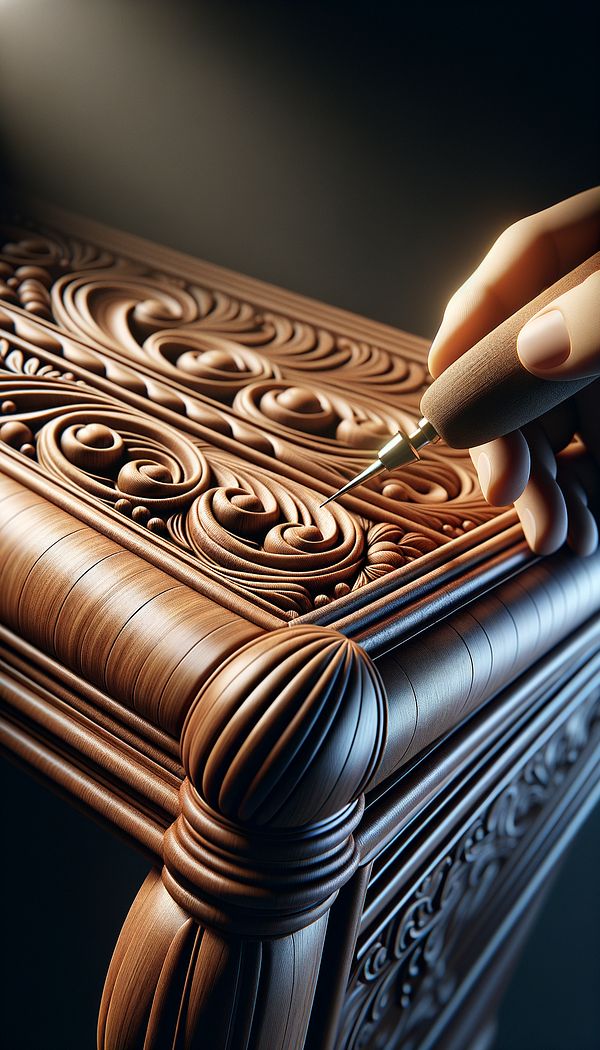What is Beading?
Beading is a decorative detail characterized by a series of small, rounded shapes or beads lined up in a row.
Description
Beading, in the realm of interior design, refers to a decorative element that features a sequence of small, rounded figures or beads which are often lined up in a row along the edges or surfaces of furniture, architectural elements, or decor items. This technique can add both texture and visual interest to various objects and spaces, creating a subtle but distinct aesthetic appeal.
The origins of beading as a decorative technique can be traced back to various cultures and historical periods, where it was used not just in interiors but also in jewelry, clothing, and art. In modern interior design, beading is applied across a wide range of contexts - from traditional to contemporary settings, proving its versatility and timeless appeal.
The beauty of beading lies in its ability to provide a tactile and visual contrast within an interior space. Depending on the material, placement, and finish of the beads, this design element can either stand out as a focal point or blend seamlessly into the surroundings, enhancing the overall look and feel of a room.
When applied to furniture, beading can define edges or highlight structural details, adding sophistication and a hint of luxury. In architectural settings, beading can appear as a detail on moldings, door frames, or paneling, subtly contributing to the space's character and sense of craftsmanship.
Usage
Beading is extensively used in various interior design applications, including:
- As a decorative trim on furniture pieces, such as tables, chairs, and cabinets.
- On the edges of mirrors and picture frames to add depth and decoration.
- As part of architectural moldings and trim, enhancing doorways, windows, and ceilings.
- In textile and upholstery designs, where beaded patterns add texture and interest to fabrics.
FAQs
-
Is beading only used in traditional interior designs?
No, beading is versatile and can be incorporated into various design styles, from traditional to contemporary, depending on how it's used and the context within which it appears.
-
Can beading be applied to any type of material?
Beading can be incorporated into a wide range of materials, including wood, metal, glass, and textiles, offering flexibility in design applications.
-
Is beading purely decorative, or does it have functional aspects as well?
While primarily decorative, beading can also serve functional purposes, such as providing grip on furniture handles or delineating areas within a space.
Practical Application
When incorporating beading into your design projects, consider the material and placement to ensure it complements the overall aesthetic of the space. For a subtle effect, use beading that matches the color and texture of the surface it adorns. For a more dramatic impact, opt for contrasting materials or colors. Be mindful of the scale and spacing of the beads to maintain balance and harmony within the design.
-
Architectural Elements199 articles
-
Design Styles478 articles
-
Furniture Types599 articles
-
Decorative Techniques322 articles
-
Materials & Textiles360 articles
-
Curio CabinetA curio cabinet is a type of display case made primarily of glass, designed for showcasing collectibles, antiques, and curiosities.
-
Barrel BackBarrel back refers to a curved, rounded backrest on a chair or sofa, resembling the shape of a half barrel.
-
Iron BedAn iron bed is a bed frame made primarily out of iron.
-
CupboardA cupboard is a piece of furniture with shelves or compartments, used for storing items.
-
IndustrialIndustrial refers to a design style that draws inspiration from old factories and industrial spaces.
